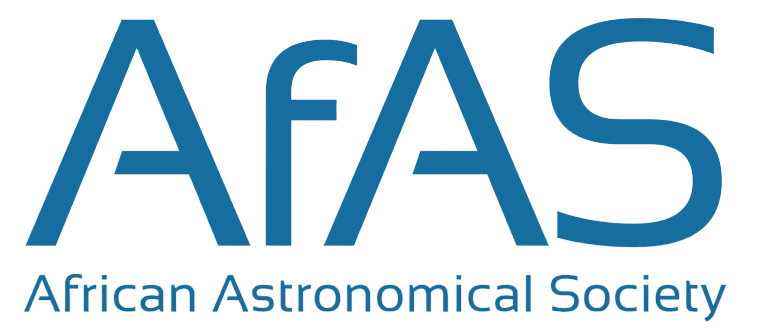The PDF version is available here.
AFAS PRESS RELEASE ON THE 21 JUNE ANNULAR SOLAR ECLIPSE
The 21st June Ring of Fire over Africa
The First Annular Solar Eclipse of the Decade
It Starts in the Heartland of Africa
An annular solar eclipse will occur on 21 June 2020, which will be visible across large parts of central and east Africa early in the morning. The locations that will pass exactly under the shadow of the Moon are in a 60 km wide path through Democratic Republic of Congo, Central African Republic, South Sudan, Ethiopia and Eritrea. Other regions will see a partial eclipse. Unfortunately, the public will not be able to gather together in large numbers to view the eclipse due to the COVID-19 pandemic. The African Astronomical Society (AfAS) has produced posters and a handbook to inform the public on simple yet safe ways to view the eclipse from their homes and neighbourhood, as well as a free android app.
What is an Eclipse?
A solar eclipse takes place when the Moon comes between the Sun and the Earth. As the Moon’s shadow races across the surface of the Earth, regions under it will see the Moon slowly cover the disc of the Sun and subsequently move away, over a few hours. At maximum eclipse, only a portion of the Sun may be covered, depending on your location, and this is a
partial solar eclipse. Locations on the Earth that are exactly under the Moon’s shadow will see the Sun covered completely for a few minutes during maximum eclipse. On 21 June 2020, since the Moon will be further away from us than usual, it can only cover about 96% of the surface of the Sun at maximum, resulting in a ring of fire, or annulus, of the exposed Sun around the Moon. This is the path of annularity that is around 60 km wide.
Where will it be visible?
A narrow belt running through Democratic Republic of Congo, Central African Republic, South Sudan, Ethiopia and Eritrea will see 96% of the sun covered as an annular eclipse. The maximum fraction of the Sun covered is about 70% in central Sudan, Chad, southern Ethiopia and Kenya, about 35-50% in Libya, Egypt and Tanzania, and even less for regions farther away from the annular path. This will be an early morning eclipse. The more West you are in Africa, the less will be the duration of the eclipse that will be seen after sunrise, and hence it is important to get an unobstructed view of the Eartern horizon to see the eclipse. Due to the COVID-19 pandemic and the restrictions on public gatherings, we won’t be able to view this eclipse from our schools or associations. However it is still possible to enjoy this eclipse from our homes and neighbourhoods while following local regulations.
How to view the eclipse safely
It is important that we do not look at the Sun at any time directly with our naked eyes or through a telescope, binoculars or any optics. This may cause permanent damage to our eyes. However, it is safe to see the projected image of the Sun, and we advise everyone in the countries where the eclipse will be visible, to use this technique. AfAS has produced an illustrative handbook and a set of posters that explain some of the methods by which we can see the eclipse in projection. These contain tables of eclipse timings for each African country that can see the eclipse. Simple methods of viewing the eclipse include looking at the images of the eclipsed Sun below the trees that are formed by the gaps in the leaves above, looking at the image formed by a pin-hole on a paper held up against the Sun, and using a small mirror to project the Sun into your room.
Eclipsed Sun under trees, credits: Ellywa
Eclipsed Sun using interweaving fingers, credits: AAS / Rick Fienberg
Eclipsed Sun through a kitchen sieve, credits: Joe Mabel
Resources freely available
Our posters and the handbook are available for free download on our website and are aimed at school students, teachers and members of the general public. Many groups in Africa that are in or close to the path of annularity will be broadcasting the eclipse online for all of us to enjoy. These links will be posted on our website and social media in a few days. In addition, in collaboration with the Astronomical Society of India, we have adapted their free Android App on the eclipse for Africa, which is now available in Amharic and Kiswahili.
The African Astronomical Society encourages everyone in countries that can see the eclipse to use the methods in our publications to view this grand celestial spectacle on 21 June, in a safe manner from their homes.
The African Astronomical Society (AfAS) is the primary organisation representing professional astronomers from across the African continent and is funded by the Department of Science and Innovation in South Africa AfAS is based in Cape Town on the campus of the South African Astronomical Observatory.
Website: https://www.africanastronomicalsociety.org/solar-eclipse-2020/
Facebook: https://www.facebook.com/AfAS2.0/
Twitter and instagram: @africaastronomy
Contact details
1. Niruj Mohan Ramanujam
Chairperson, Outreach Committee, African Astronomical Society
Email: niruj@africanastronomicalsociety.org
Phone: +27 72 516 3961
2. Alemiye Mamo
Coordinator, East African Regional Office of Astronomy for Development and
Ethiopian Space Science and Technology Institute
Email: malemiye@gmail.com
Phone: +251 94 083 4217
3. Sarah Abotsi-Masters
General Secretary, African Astronomical Society
Email: sarahatmasters@gmail.com
Phone: +233 244 298 529
